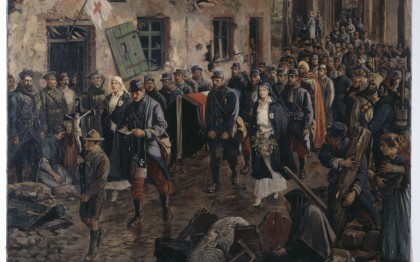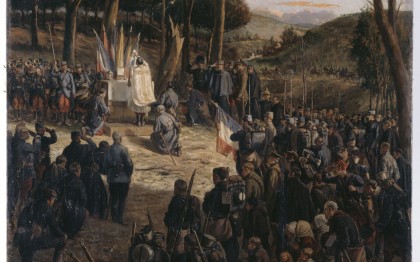Although the debate surrounding the origins of Gothic art was resolved definitively in favour of France in the mid-19th century, the Cathedral was still a powerful national symbol on both banks of the Rhine on the eve of the First World War. On the French side, the spire of Strasbourg Cathedral, standing at the heart of the lost region of Alsace, embodied a desire for recapture, while the reconstruction of the façade of Metz cathedral extolled the glory of German architecture in Lorraine.
In this context, the bombing of Reims cathedral by German troops was extremely traumatic and rekindled patriotic tensions between intellectuals in both camps. On 19 September 1914, the shells falling on the cathedral caused an exceptionally fierce fire. Molten lead from the roof poured out of the mouths of the gargoyles, a truly infernal sight which caught people's imaginations.
The image of the desecrated building, like a great war casualty, was widely disseminated by French propagandists, while on the other side, artists and scientists launched an 'appeal to the world of culture' to minimise German responsibility. Large numbers of French and German historians were involved in this one-upmanship of posters, descriptions, postcards, caricatures and exhibitions, in which the history of art became a weapon in its own right.
Despite the international indignation, the destruction continued throughout the war in the combat zone, which tragically was also an area filled with Gothic art. The cathedrals of Amiens, Arras, Verdun and Soissons were badly damaged. These buildings took on a new dimension through their suffering; whereas the Cathedral was once a symbol of the union between the throne and the altar, it now saw the Republic, Religion and the Arts united in the same anguish.




